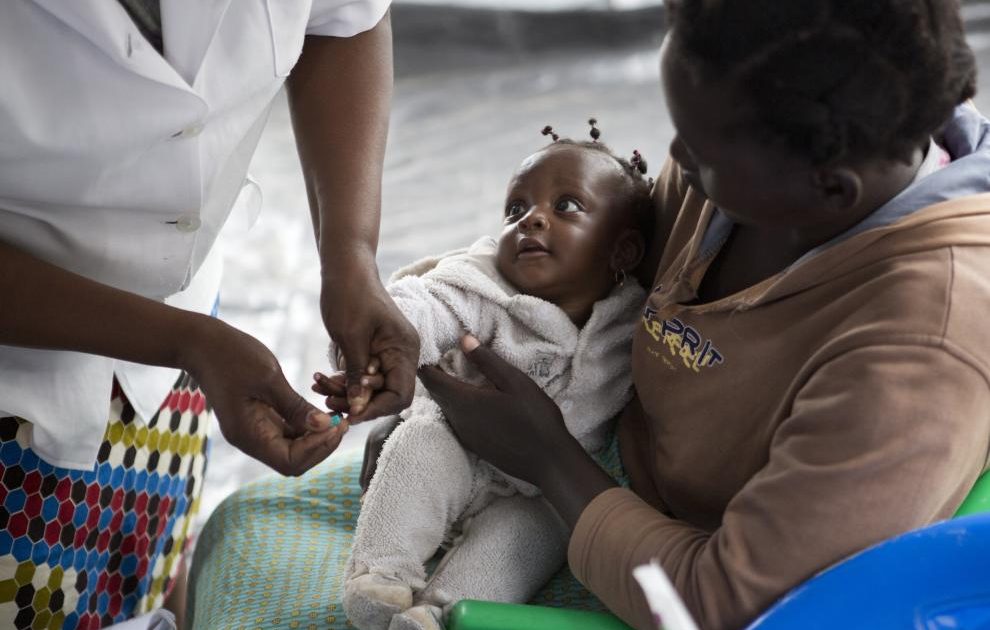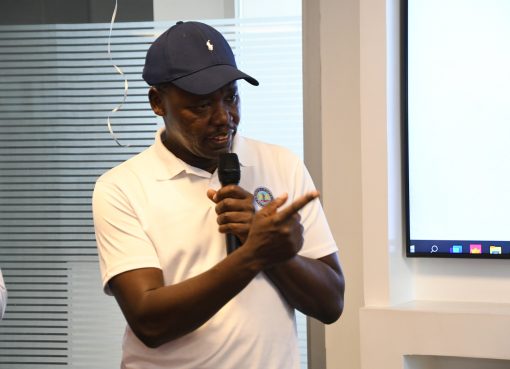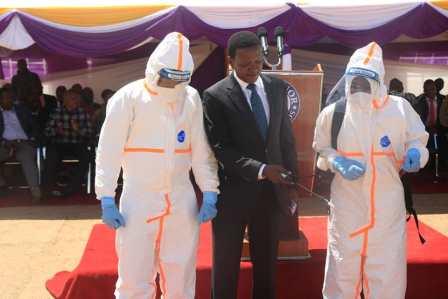Twelve countries in Sub-Saharan Africa have together laid down an elaborate seven-year action plan, to end AIDS among children by 2030, through support from international partners.
To urgently address these concerns, Ministers, and representatives of The Global Alliance to End AIDS in Children, have committed themselves to upscale their activities, to ensure that all children with HIV, have access to life-saving treatment and that mothers living with HIV have babies free from HIV.
WHO Director-General, Dr. Tedros Adhanom Ghebreyesus, said that the global health body is committed to health for all while aiming to leave no children in need of HIV treatment behind.
“More than 40 years since AIDS first emerged, we have come a long way in preventing infections among children and increasing access to treatment, but progress has stalled,” said Dr. Tedros, adding that presently around the globe, a dear life of a child is lost every five minutes, due to AIDS-related causes.
In this way, Dr. Tedros pointed out that the Global Alliance to end AIDS in Children is a much-needed initiative, to reinvigorate progress.
“WHO is committed to supporting countries with technical leadership and policy implementation, to realize our shared vision of ending AIDS in children by 2030,” he assured.
The World Health Organization(WHO) estimates that half (52%) of children living with HIV, are on a life-saving treatment which lags much behind compared to adults, of whom three-quarters (76%) are receiving antiretroviral.
The 2021 study report indicates that 160,000 children newly acquired HIV and accounted for 15 percent of all AIDS-related deaths, despite the fact that only 4 percent of the total number of people living with HIV are children.
The Dar-es-Salaam Declaration seeks to partner with various networks of people living with HIV and community leaders, to help find and provide testing to more expectant women and provide them with the necessary links to healthcare.
The mooted plans are further geared towards finding and caring for infants and children living with the scourge and achieving the set targets.
“Tanzania has shown its political engagement, now we need to commit to moving forward as a collective whole. All of us in our capacities, must have a role to play to end AIDS in children. The Global Alliance is the right direction, and we must not remain complacent. 2030 is at our doorstep,” said Philip Mpango, Vice-President of the United Republic of Tanzania.
Affirming the same sentiments, the First Lady of Namibia, Monica Geingos, observed that there is no higher priority than a gathering of leaders who are uniting in a solemn vow, with a clear plan of action to end AIDS in children once and for all.
The First Phase of the alliance brought together 12 countries with high HIV burdens which comprised Kenya, Angola, Cameroon, Côte d’Ivoire, the Democratic Republic of the Congo (DRC), Mozambique, Nigeria, South Africa, the United Republic of Tanzania, Uganda, Zambia, and Zimbabwe.
The Alliance’s grand task will be centered on four pillars across early testing and optimal treatment and care for infants, children, and adolescents.
Secondly, it will strive to close the treatment gap for pregnant and breastfeeding women living with HIV, to eliminate vertical transmission.
In addition, the Leaders’ Alliance will also help in preventing new HIV infections among pregnant and breastfeeding adolescent girls and women, and addressing rights, gender equality, and the social and structural barriers that hinder access to services.
UNICEF’s Associate Director Anurita Bains lauded the leaders’ commitment and pledged their continued support to ensure that every child has the right to a healthy and hopeful future.
“We cannot let children continue to be left behind in the global response to HIV and AIDS. Governments and partners can count on UNICEF to be there every step of the way. This includes work to integrate HIV services into primary health care and strengthen the capacity of local health systems,” Dr. Bains reassured as she registered her concerns for the more than half of children living with HIV, whose future remains threatened.
The virtual meeting in Dar-es-Salaam also brought together key global health partners like the Global Fund Executive Director, Peter Sands, PERFAR’s John Nkengasong, U.S. Global AIDS Coordinator, EGPAF President and CEO, Chip Lyons.
They stressed that closing the gap for children, will require laser focus and a steadfast commitment to holding governments and all health partners accountable for positive results.
In July 2022, the Global Alliance to end AIDS in children was launched by the UNAIDS, a network of people living with HIV, UNICEF, and WHO in collaboration with partners like PEPFAR and The Global Fund at the AIDS conference in Montreal, Canada.
Crucially for the initiative to succeed, the delegates noted that a bottoms-up approach with local, national, and regional stakeholders taking ownership of the initiative, and engagement of a broad set of partners.
According to the WHO Report, 16 countries and territories have been certified for validation of eliminating vertical transmission of HIV and/or syphilis.
Transmissions of HIV and other infections, can pass from a mother to child during pregnancy or while breastfeeding. This can be addressed through prompt HIV treatment for pregnant women living with HIV or pre-exposure prophylaxis (PrEP) for mothers at risk of HIV infection.
The Report indicates that last year, Botswana was the first African country with high HIV prevalence to be validated as being on the path to eliminating vertical transmission of HIV.
It highlights that the country had fewer than 500 new HIV infections among babies per 100,000 births compared to 10 years ago, when the vertical transmission rate in the country was 2 percent versus 10 percent.
Executive Director of UNAIDS, Winnie Byanyima, reiterated that the leaders’ meeting has given more clear hopes that they will close the treatment gap for children to save children’s lives.
“This means that no baby needs to be born with HIV or get infected during breastfeeding, and no child living with HIV needs to be without treatment,” Byanyima stressed.
By Rolex Omondi




